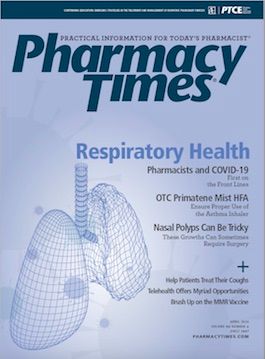Publication
Article
Pharmacy Times
Appellate Court Reverses Contributory Negligence Defense
The court overturns a previous ruling that a patient was barred from recovery by virtue of her own error.
ISSUE OF THE CASE
A patient in a Southern state received a package from a mail-order pharmacy bearing medication for a different patient. She consumed it, arguably leading to her death. After representatives of her estate filed a wrongful death suit, the trial court judge dismissed it before trial based on the legal doctrine of contributory negligence, but the representatives appealed. Should it be overturned?
FACTS OF THE CASE
The facts of this case from the discussion of the trial court decision were detailed in the column “Patient’s Own Negligence Bars Recovery for Damages” in the October 2019 issue of Pharmacy Times®. In summary, a woman received 2 packages bearing medications, one intended for her and the second intended for someone else but misdirected to her. The plaintiffs alleged that her consumption of the erroneous medication led to a fall that necessitated a monthlong hospitalization and caused her demise 2 weeks after she returned home.
The trial court judge received motions from both the plaintiffs representing her estate and the defendant mail-order pharmacy operator. The motions were for summary judgment, asking the judge to rule that no trial was needed because the case included no genuine issues of material fact to be decided during that proceeding. Each side requested that the judge rule in its favor.
The trial court judge ruled in favor of the defendant mail-order pharmacy, bringing the legal proceeding at the trial court level to a conclusion. The trial court judge ruled that the patient’s error in consuming medication intended for someone else was contributory negligence. Under the law of the state where this matter arose, that was a total bar to recovery. The representatives of the estate thought that the judge’s ruling was in error and pursued an appeal. All these proceedings were in federal court because the parties were located in different states, so the appeal went from a US district court to a US court of appeals.
THE RULING
The court of appeals judges ruled that the trial court judge had misapplied the legal doctrine of contributory negligence and its relationship to the facts of this case. The higher court reversed the decision of the trial court on the issue of contributory negligence.
THE COURT’S REASONING
The appellate court noted at the outset that the exterior of the shipping package bearing the erroneous medications bore the deceased patient’s name and address. However, the individual containers inside had labels with the name of another patient, the name of the prescriber, and the name of the medication. The deceased patient was reported to be elderly and barely literate, so she apparently did not read the container labels before consuming the pharmaceuticals.
The judges also reviewed the law related to granting summary judgment. They emphasized that “summary judgment is appropriate if the evidence shows there is no genuine issue of any material fact.” Focusing on the role of the trial judge, the appellate court said that the judge was not to weigh the evidence. Rather, his role was to determine whether a genuine issue of fact for trial existed.
The court continued by stating that summary judgment is rarely appropriate for issues of contributory negligence because application of that rule requires a determination of what was “reasonable care” under the circumstances, and that is a question of fact for the jury, not a question of law for the judge.
In “borderline cases, fairness and judicial economy suggest that courts should decide in favor of submitting issues to the jury,” the court said.
The appellate court, sitting in judgment to review the decision of the trial court judge and applying the law of the state where the now deceased patient had resided, could not conclude that “as a matter of law [the decedent] was contributorily negligent for failing to read the labels on the medication.”
What could be viewed as conflicting testimony also existed about who told the patient what after the medication had arrived. That is a question of fact to be answered by the jury, not the judge.
The law of contributory negligence has changed over the past century or so. In most states, the rule used to be that if the individual bringing the lawsuit had contributed to his or her injury, that would eliminate the ability to sue. The approach now adopted in a majority of states is that juries are asked to apportion blame between the parties—eg, 80/20, 60/40, or 50/50—and reduce the amount awarded accordingly. That approach is called comparative negligence.
Joseph L. Fink III, BSPharm, JD, DSc (Hon), FAPhA, is a professor of pharmacy law and policy and the Kentucky Pharmacists Association Endowed Professor of Leadership at the University of Kentucky College of Pharmacy in Lexington.







